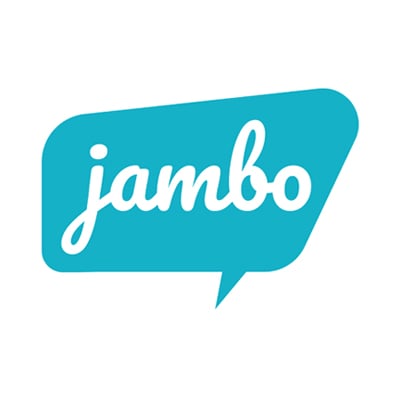
Whether you're focused on stakeholder engagement, risk management, meeting regulatory requirements, or developing positive stakeholder relationships, trust is vital. We’ve compiled this detailed list to help you learn how to build trust.
Sept façons de renforcer la confiance des parties prenantes
1. Recherchez vos parties prenantes
Building stakeholder trust starts with researching your stakeholders so you have a strong foundation of information to ensure your interactions with them are sincere. This is important because by coming to your engagement sessions having researched them, you can show your stakeholders you've taken the time to learn about them, are invested in them and are willing to listen.
2. Seek to understand your stakeholder's history with engagement
The more you seek to understand your stakeholders and their unique perspectives, the more you'll be able to engage in more relevant and meaningful ways for everyone. You need to find out if they have an earlier history with your organization and, if possible, if they have ever been involved in an engagement process like yours.
Vous devez comprendre quand la confiance a été rompue dans le passé
You may identify places where trust has been broken in the past, either by your organization, a similar organization, or a similar process. You'll want to understand those pain points affecting your stakeholders and be mindful that those negative past experiences will need to be accounted for and considered.
You're building trust and relationships on behalf of your organization
Remember, it is not just about building a relationship for the duration of this one project. You’re building trust for years to come, so you need to seek to understand your stakeholders’ history with your organization, as it can impact your ability to build trusting relationships now and in the future.
3. Ask questions to learn what's important to your stakeholders
You'll inevitably need to ask some questions when researching and working to understand your stakeholders' engagement history. If there's a history, it's worthwhile to ask your internal team(s) about your stakeholders, as this can provide some crucial insights into what your stakeholders might care about and how they may already feel about your organization.
Beyond asking your team(s), ask your stakeholders for information about what's important to them. By asking your stakeholders for their perspectives instead of making assumptions, you'll help show them that you care about what's important to them, which will go a long way towards building trust.
4. Soyez honnête sur ce que vos parties prenantes peuvent attendre de vous
From the start, be honest and open with your stakeholders about what they can expect from you and this entire process (and let them know if anything changes). Stakeholders don't want to enter a process and expect to have a say in whether a project moves forward, only to discover that the project has already been decided, and they don't have a say.
S'inspirer du spectre de la participation publique de l'IAP2
In the Spectrum of Public Participation developed by the International Association for Public Participation (IAP2), there are five levels of participation (i.e., inform, consult, involve, collaborate, and empower). To help build trust, you'll want to clarify where your engagement with stakeholders lies on that spectrum from the start. Don't tell somebody that they're going to be able to directly inform the "yes or no" decisions of a project if they're actually at the "inform-level" and not the "empower-level."
N'oubliez pas que vos parties prenantes ont pris le temps de participer à la conversation et au processus, alors respectez leur temps en étant honnête sur ce qu'elles peuvent attendre et sur ce que vous ferez des informations et du retour d'information qu'elles vous communiquent.
5. Respecter tous les engagements et toutes les promesses des parties prenantes
An important way to build trust is by following through on every commitment or promise to your stakeholders. For example, if you've agreed to email a stakeholder once a month or send them a document after a meeting, then follow through accordingly. In trusting relationships, it's not enough to say you'll do something; your words and actions must be consistent.
Pro-tip for following through on stakeholder commitments: Following through doesn't just help build trust; it's also a crucial stakeholder engagement risk management tool. To ensure you never miss a commitment, you need to be aware of every promise made to your stakeholders and have the means to track their progress. Stakeholder Relationship Management (SRM) software can help you stay on top of your stakeholder commitments.
6. Reconnaître et communiquer avec les parties prenantes en cas d'erreur
How you communicate with your stakeholders during and after a mistake can affect your project's level of risk and how much your stakeholders trust your organization moving forward. So, what do you do when you make a mistake?
If you happen to forget about a commitment or if something goes wrong, be honest with your stakeholders, be ready to acknowledge the mistake, and apologize if necessary. By owning up to any mistakes, you're showing your commitment to your stakeholder relationships and showing your dedication to making things right.
Once your stakeholders see your willingness to do better and remedy your mistakes, they'll likely see your commitment to honesty and transparency, which are key pillars to trusting relationships. This honesty and transparency (that we don't always see from all organizations) can strengthen trust over time and help mitigate any risks that arose from the mistake.
Don't try to hide mistakes
It's essential to acknowledge your mistakes and not play them off as "nothing" or blame them on someone else. Stakeholders will know if you're trying to hide something from them, so you're much better off being honest and explaining what has happened immediately.
Lorsque vous communiquez sur une erreur, commencez par les faits
When you communicate with a stakeholder about a mistake, lead with the facts, and give them time, space, and opportunities to communicate how they feel about the situation. While this isn't always easy, keep communication channels open and navigate this with support from leadership in your organization so that everyone is working together in an aligned, factual, and honest manner.
Learn how to manage and improve stakeholder relationships with proven frameworks and tools→
7. Soyez proactif dans vos relations avec les parties prenantes
Lorsque nous décrivons quelqu'un comme étant proactif, il s'agit souvent d'une personne sur laquelle nous pouvons compter pour "faire avancer les choses". Être proactif dans l'engagement des parties prenantes signifie que celles-ci peuvent compter sur vous pour assumer la responsabilité de ce qui se passe dans votre (vos) projet(s) et pour rechercher les meilleures solutions possibles de manière productive et honnête.
Les gens soutiennent ce qu'ils contribuent à créer et à construire, de sorte que vos parties prenantes ne doivent pas se sentir lésées par vos choix et vos actions. Ils auront besoin d'une honnêteté et d'une transparence constantes sur ce qu'ils peuvent attendre de vous, du processus et du projet, afin d'instaurer la confiance. Ils devront comprendre clairement où se situent leurs possibilités d'influence et savoir que vous communiquerez au fur et à mesure, que vous tiendrez parole et que vous rectifierez le tir en cas de faux pas en cours de route.
Instaurer la confiance entre les parties prenantes demande des efforts, du temps et de l'engagement.
Tout ce que nous avons partagé ici aujourd'hui nécessitera un engagement de votre part, mais la confiance que vous gagnerez en retour vaut bien le temps et les efforts que vous y consacrerez.
Principaux enseignements
|
Next steps: Beginner's guide to stakeholder engagement
For those new to stakeholder engagement and seeking more information, check out our Beginner's Guide to Stakeholder Engagement. This 27-page eBook helps you learn how to get organized, build better relationships, and move forward purposefully.








